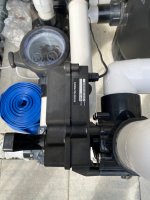We have a water feature with two sheer descents controlled by an actuator. Even after the sheers run for as little as 3 minutes and then stop, water continues sipping from one of the sheers for many days (6 to be exact), even if I keep the feature off for all that time. Interestingly enough, the other sheer does not do it. After 6 days (if I do not run the feature) water stops but then it starts doing the same thing again as soon as I turn the feature on and then off. My contractor is telling me this is “pressure equalization” and nothing can be done about it. I do not buy this for the following reasons:
1. Why does it happen to only one sheer and not both of them?
2. Taking 6 days for water to get out of the pipe seems way too long for me.
3. Our lot is flat, so there is really no condition for gravity to play such a dramatic role.
Any thoughts/recommendations on how to troubleshoot/fix this?
1. Why does it happen to only one sheer and not both of them?
2. Taking 6 days for water to get out of the pipe seems way too long for me.
3. Our lot is flat, so there is really no condition for gravity to play such a dramatic role.
Any thoughts/recommendations on how to troubleshoot/fix this?






